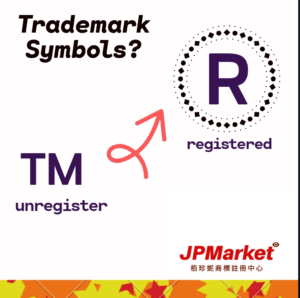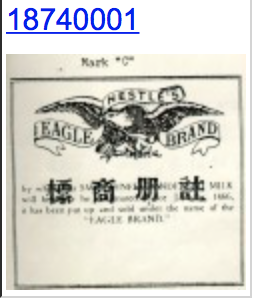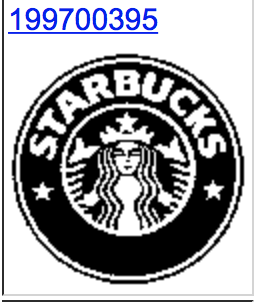Q&A
Certificates will no longer be issued
**[Notice]** Starting from June 28, 2024, the Hong Kong Intellectual Property Department will issue electronic certificates for the registration of trademarks, patents, and design registrations, replacing the traditional paper certificates.
**[Notice]** Starting from January 1, 2022, the China National Intellectual Property Administration (CNIPA) will issue electronic certificates for the registration of trademarks, patents, and design registrations, replacing the traditional paper certificates.
Trade mark symbols TM | ®

You can use the ® symbol to indicate that your trade mark is registered. If your trade mark is unregistered, you cannot use the ® symbol, but you may use the ™ symbol. Using the ® symbol with an unregistered trade mark is a criminal offence.
Is a trademark registration valid worldwide?
There is no registration that can protect your trademark on a global level. As such, it is important to register your trademark in the countries which you have targeted for expansion to ensure maximum protection in your points of export or commercial interest.
What is Trade Mark (TM)?
A trademark is a sign that distinguishes the goods and services of one trader from those of others. Typically a trademark can be words (including personal names), indications, designs, letters, characters, numerals, figurative elements, colours, sounds, smells, the shape of the goods or their packaging or any combination of these. A sign must be capable of being represented graphically in order for it to be registered as a trademark.



The 1st Trademark Registration in Hong Kong in 1874.
Device Marks
Composition Marks



Color Marks
Color Marks
Words Marks


3D Marks
3D Marks

Sound Marks

Scents Marks
Tennis Balls : The smell of fresh cut grass (EUTM No. : 428870)
(EUTM No.: 428870)
Registering a trade mark in other places?
申請人須向每個國家或司法管轄區逐一提交商標註冊申請 ,每個地方將獨立決定該商標會否得以在該地註冊。 因此,商標在香港註冊後所得的保護,不會伸延到中國內地或世界其他地方。 同樣地,在中國內地或世界其他地方註冊的商標,亦不適用於香港。 你可在希望尋求保護的國家或司法管轄區逐一提交商標註冊申請。
Register my name in plain text or register my logo? or register both?
Filing both a name/word mark and a logo requires two separate applications, meaning that if you want to trademark both the name and logo, you will need to pay double in total if you’re registering your trademark for one class of goods/services. For most businesses, the most important thing to trademark is their name in plain text. Registering the logo should usually be done as a separate trademark application. Technically you can save money and protect both your name and logo by registering the logo if it contains the name in it, but this is not recommended because if you ever change the design of your logo, you will risk losing your protection for the name. You can choose whether you want to trademark a word/phrase, a logo, or both.
Should I Register My Trade Mark in Colour or Black and White?
Generally speaking, unless there’s something about the color(s) in your logo that are particularly distinctive and unique, registering your mark in its black and white form is a good idea. That way, the scope of protection your registration provides will not be limited according to the use of any particular color or color combination. Also, a black and white logo registration gives you the freedom to present your logo in different color combinations without diluting the scope of protection provided by your own registration.
How to combat Online Trademark infringement?
It is advisable to first notify online platforms such as Amazon, JD, HKTVmall, Taobao, etc., regarding this infringement incident. As the brand owner, you should attach the trademark registration certificate and inform them that this store is selling products without your authorization. Request that they immediately remove the listings. Moreover, trademark registration is territorial; to obtain protection, it is essential to register in other local countries as well. There have been many cases of trademark squatting, so it is crucial to register in other countries as early as possible to avoid such issues!
How does a right owner report a trademark counterfeiting activity?
The right owner should furnish the following information to Hong Kong Customs when reporting a trademark counterfeiting activity:
- relevant Trademark Certificate as proof of the trademark having been registered in HKSAR;
- sample of the genuine product and the offending goods;
- in case the recordation is filed by a party other than the right owner, written authorization for the party to complete the recordation and assist in criminal prosecution or other legal action on the right owner's behalf is required; and
- appointment letter in regard to a competent examiner by the right holder to conduct subsequent seizure identification and undertake to give evidence and testify in court.
You are encouraged to report information to us by:
- Information Hotline(24-hour)
(852) 2545 6182 - Fax
(852) 2543 4942 - Mail
Commissioner of Customs and Excise
G.P.O Box No. 1166 ; or - Email
crimereport@customs.gov.hk
All information of the informants will be kept strictly confidential.
Source : Hong Kong Customs
IP disputes can be referred to arbitration?
n Hong Kong, parties can use arbitration to resolve any type of dispute over any IPR, irrespective of whether the IPR is protectible by registration and whether it is registered, or subsists, in Hong Kong or in other jurisdictions. Examples of these IPRs include patents, know-how, trade marks, copyright as well as IPRs that are registered or subsist in other jurisdictions such as utility models or other types of “petty patents”, supplementary protection certificates, database rights, etc., as well as new types of IPRs which may emerge in future.
Further, IP disputes of any nature can be submitted to arbitration, including disputes over the enforceability, infringement, subsistence, validity, ownership, scope, duration or any other aspect of an IPR, disputes over any transaction in respect of an IPR and disputes over any compensation payable for an IPR.
Parties are not prevented from using arbitration to settle their IP disputes only because the relevant IP legislation does not mention the settlement of disputes by arbitration.
there are several world class arbitration institutions in Hong Kong that can help you administer your arbitration.
Arbitration institutions
- Hong Kong International Arbitration Centre (“HKIAC”): HKIAC is Hong Kong’s own home-grown arbitration body established in the 1980’s and is totally independent, free from governmental interference. HKIAC has been designated under the Ordinance to appoint arbitrators and to determine the number of arbitrators where the parties to a dispute are unable to agree.
- The International Court of Arbitration of the International Chamber of Commerce (ICC-ICA): In November 2008, the Paris-based ICC-ICA has opened the first overseas branch of its Secretariat in Hong Kong to serve ICC arbitration in the Asia-Pacific Region, namely ICC-ICA – Asia Office.
- China International Economic and Trade Arbitration Commission (“CIETAC”): CIETAC was established in 1956 and is China’s oldest and most experienced arbitration institution, accepting the majority of foreign-related arbitration cases in China. In September 2012, CIETAC established its first branch outside the Mainland in Hong Kong, namely the CIETAC Hong Kong Arbitration Centre.
- China Maritime Arbitration Commission (“CMAC”): CMAC was established in 1959 and is the sole maritime arbitration institution in China. In November 2014, CMAC established a branch in Hong Kong, namely the CMAC Hong Kong Arbitration Centre.
- Permanent Court of Arbitration (“PCA”): PCA was established in 1899 by the Convention for the Pacific Settlement of International Disputes and has developed into a modern and reputable arbitral institution handling international investment arbitration with its headquarters in The Hague. In January 2015, the PCA signed a host country agreement with the Central People’s Government and a related memorandum of administrative arrangements with the Government of the Hong Kong Special Administrative Region to facilitate the conduct of PCA-administered arbitration in Hong Kong, including state-investor arbitration.
- The Hong Kong Maritime Arbitration Group (“HKMAG”): HKMAG was originally formed in February 2000 as a division of HKIAC and became an independent organization in March 2019. HKMAG has the specific aim of the promotion of the development and use of maritime arbitration and mediation in Hong Kong.
- eBRAM International Online Dispute Resolution Centre (“eBRAM”): eBRAM was established in June 2018 and is an independent and not-for-profit organisation under Hong Kong law. It provides a new online dispute resolution platform in Hong Kong.
the website of the Department of Justice
https://www.doj.gov.hk/en/legal_dispute/arbitration.html
Infringement of IP rights
If infringement of IP rights was established, a court in the Hong Kong SAR can make any of the following orders:
1. Injunction
This is an order requiring the infringer to cease infringing your IP.
2. Damages
This is an order requiring the infringer to make financial compensation to you for the infringing conduct that occurred.
3. Account of profits
This is an order requiring the infringer to pay you all the profits that it earned as a result of the infringing conduct. Depending on the case, the amount of profits accounted for may be greater than the damages that have been awarded by the court.
